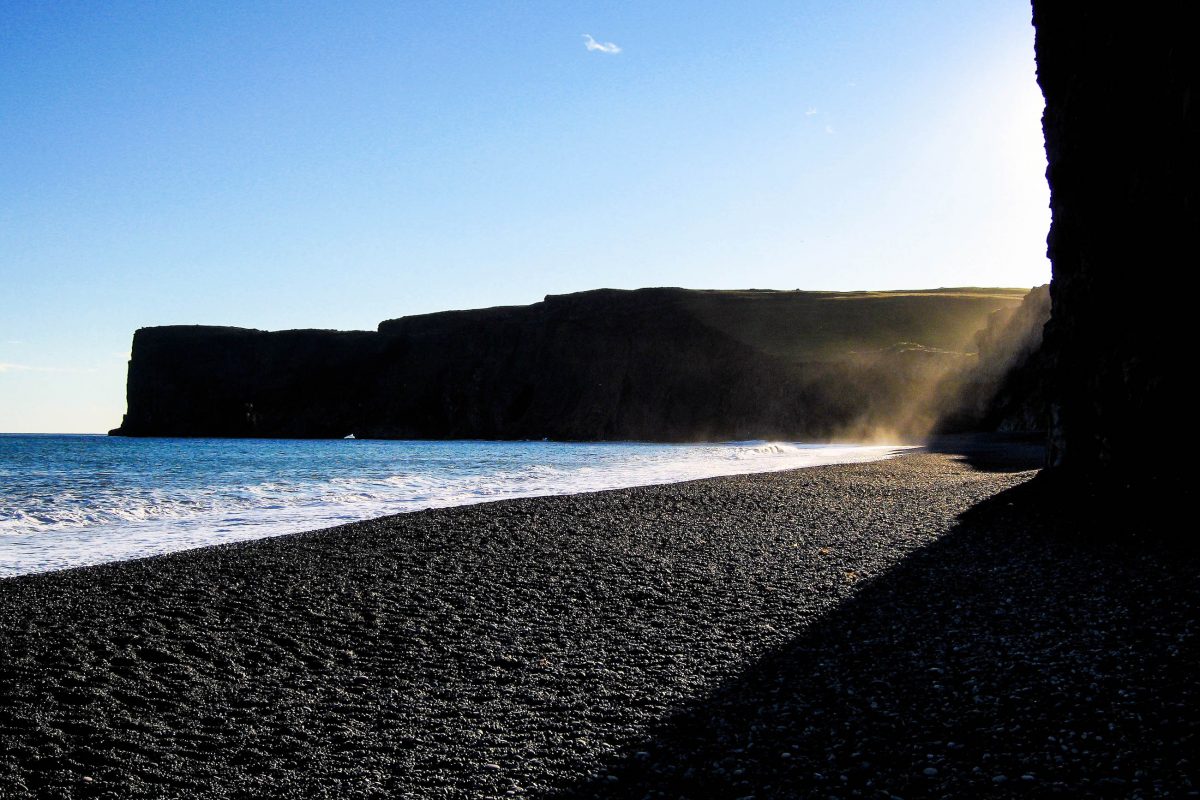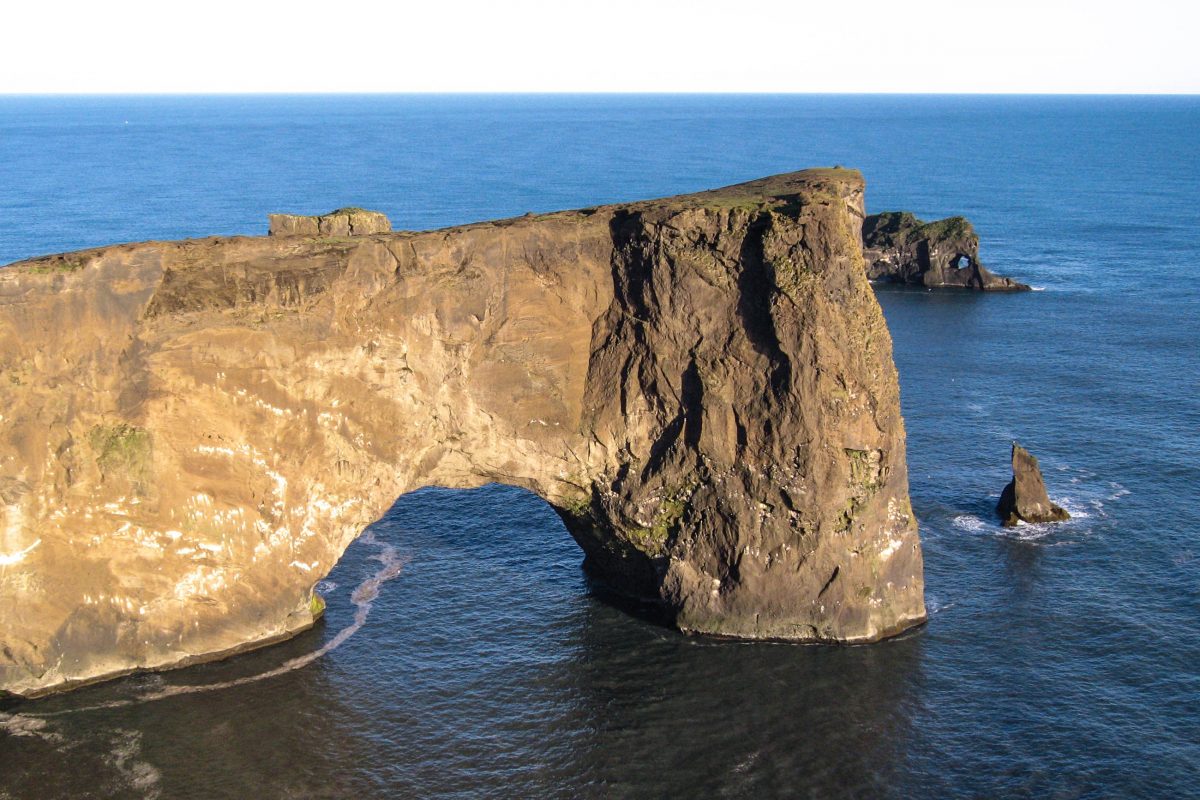Am Kap Dyrhólaey, einer vulkanischen Halbinsel im Süden Islands, befindet sich die Lagune Dyrhólaós mit ihrem eindrucksvollen Lavastrand und das berühmte Felsentor.
Das Kap Dyrhólaey ist eine Halbinsel vulkanischen Ursprungs im Süden Islands und steht auf unserer Liste der Top 10 Sehenswürdigkeiten von Island. Die faszinierende Landschaft liegt ca. 6km westlich der Ortschaft Vík. Experten zufolge ist die Halbinsel vor über 80.000 Jahren entstanden. Die Wände der eindrucksvollen Vulkaninsel ragen an die 120 Meter steil in die Höhe.
Inhaltsverzeichnis
BILDER: Kap Dyrhólaey und Lagune Dyrhólaos
Fotogalerie: Kap Dyrhólaey und Lagune Dyrhólaos
Wie kommt man zum Kap Dyrhólaey?
Man erreicht das Kap Dyrhólaey von der Ringstraße kommend über die Straße 218. Achtung: die Straße ist wegen des Vogelreichtums in den Monaten Mai und Juni meist gesperrt, damit die Brutvögel (vor allem Papageientaucher und Seeschwalben) dort ungestört sind.
Linkerhand kommt man am Ende der Straße zur Lagune Dyrhólaós mit dem berühmten schwarzen Lavasandstrand. Hält man sich rechts auf der Straße, führt eine unbefestigte steile Piste auf das Plateau der Halbinsel hinauf.
Lagune Dyrhólaós und der schwarze Sandstrand

Der Lavasandstrand von Dyrhólaós wurde bereits unter die 10 schönsten Strände der Welt gewählt. Doch wer sich nun Palmen, schneeweißen Pudersand und türkisblaues Meer erwartet, ist in Island eindeutig falsch. Der Strand von Dyrhólaós ist in seiner Schönheit das genaue Gegenteil. Pechschwarzer Lavasand trifft auf ein stahlblaues Meer, dessen Wellen an den Füßen der stummen Wächter aus dunklem Basalt lecken.
Dennoch kann man den Strand von Dyrholaos aufgrund seiner spektakulären Lage und den imposanten Basaltsäulen durchaus zu den schönsten der Welt zählen. Wer allerdings ein Bad im Meer versuchen will, sollte gut abgehärtet sein. Mehr als 10°C wird das Wasser hier niemals erreichen.
Leuchtturm und Felsentor am Kap Dyrholaey

Auf dem Weg nach oben zum Felsplateau des Kaps Dyrholaey wird man von einem Leuchtturm begrüßt. Er stammt aus dem Jahre 1927 und ist noch sehr gut erhalten. Von hier aus hat man eine fantastische Aussicht auf den schwarzen Lavastrand und die Ortschaft Vik mit ihren aufragenden Felsnadeln. Der Hauptgrund aber, aus dem die meisten Besucher hierher kommen, ist das dem Kap vorgelagerte Felsentor.
Diese spektakuläre Felsformation wirkt wie von Menschen geschaffen, ist jedoch völlig natürlich entstanden. Durch das Tor können – vermutlich bei ruhiger See – sogar Boote passieren. Richtet man den Blick ins Landesinnere bietet sich ein traumhafter Rundblick auf die dahinter liegenden Berge und Gletscher Islands.





